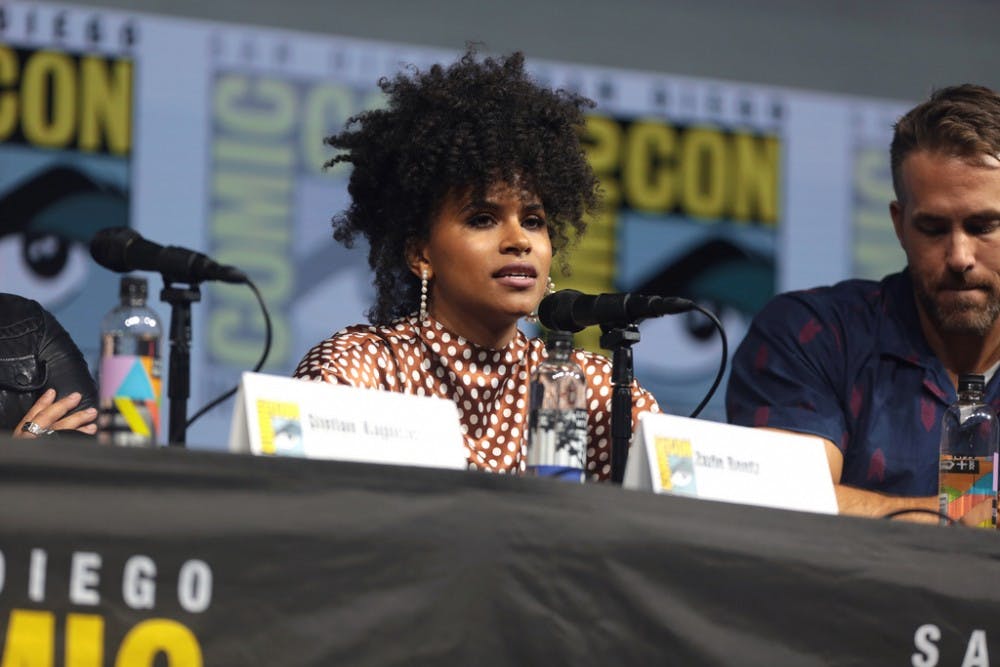High Flying Bird is a film of contradictions. It’s a film about basketball, one of the most dynamic sports ever created, yet also one where the action primarily takes place in nondescript business rooms, hotel lobbies and living rooms. It is also one of many recent films shot entirely on an iPhone, but its stylistic trappings are more indebted to classic Hollywood than to any new stylistic possibilities the iPhone has opened up. It is both a film where Netflix (the film’s distributor) figures in as a major plot point and also one where men conduct backdoor business in saunas like it’s the slickest thing since buttered bread.
Ostensibly, it’s also a film about revolution. Star sports agent, Ray Burke (André Holland), finding his job on the line in the middle of a six month NBA lockout, contrives a way to upend the exploitative economic relationship between team owners and team players, all while attempting to manage the lifestyle and finances of his star client, number one draft pick Erick Scott (Melvin Gregg).
Holland’s game-breaking idea is actually a simple one: holding and live-streaming matches between pro basketball players outside the confines of the NBA court, where owners, myopic enough to not know the difference between different streaming services, have no power. Surprisingly this “new” business model threatens the owners enough for them to take Burke as a credible threat.
In effect, the film uses basketball as a cypher for any exploitative economic relationships. References are abound to the liberating qualities of “the information age” and how the current relationship between team owners and players resembles slavery in more ways than one, for example, how team owners only need players to, as Burke says, “sell their merch and inspire rap lyrics.”
By including Netflix as a plot point, director Steven Soderbergh seems to equate his own struggle as an artist under the studio system as equivalent to that of basketball players under team owners. Soderbergh has talked at length in interviews about the studio conditions that prevent artists from creating work beyond the constraints of blockbusters and profitability. Similar concerns seems to animate High Flying Bird, as players who would be on the court are prevented from showing their talent due to people’s greed on the top.
Yet ultimately the film is too enamored with those systems to lodge any meaningful critique against them. Ray Burke’s liberating plan, one that would pool more profit toward players, is really a part of an elaborate ploy to spook the owners into ending the lockout so that Burke can advance in his company. Burke’s plan also seems to misunderstand the freedom streaming provides. Oddly, Burke sets up a meeting with Netflix to jumpstart his fake streaming plan, a move that reads as odd given that, although liberating, Netflix is a behemoth just as much beholden to its own rules and inequities as the NBA.
The film also fails to grasp that the popularity and profitability of streamers falls under the same market concerns that animate the success of the NBA. In addition, the film ignores the fact that although streaming might remove the middleman from the money and the players, not everyone will enjoy the success of the most popular players. Yet the film insists that the streaming scheme — which, once again, only exists as a means of reestablishing a more equitable form of the old economic power dynamic between players and owners — has the same political roots as famous acts of protest.
The film’s aesthetics are also a mess of misunderstanding. Rather than leveraging the iPhone’s mobility (with the notable exception of the opening shot), the film largely consists of static, wide-angle shots that create large gulfs of space between characters. Most times the script moves along at a brisk pace, with characters barely pausing for breath between lines, yet the film looks like a psychological thriller. The banal, washed-out environments only exacerbate this mismatch, creating absurd portraits of drama in scenes where very little occurs dramatically. It seems that Soderbergh just lifted the style of his previous iPhone shot film, Unsane, without readjusting his style for this new film.
In any other film, these problems would sink the movie, but High Flying Bird has enough effort and heart to overcome these problems. Though the film doesn’t provide quite enough evidence, it does showcase an argument for the inevitability of a future where players have more control over their talent and income.
Though the film may not take full advantage of the possibilities of iPhone filmmaking, the images are never poorly composed and the editing is tight. All the actors are on their A-game, with Holland and Sonja Sohn in particular making music out of a script that risked becoming boring or overly esoteric. For all these reasons, the film is good on its own merits. But just because you play the game well doesn’t make the game you play good.





